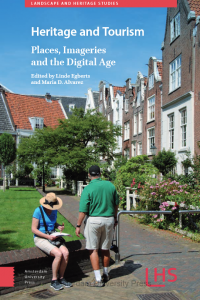 The recently published book “Heritage and Tourism. Places, Imageries and the Digital Age” edited by L. Egberts and M.D. Alvarez contains a chapter by former staff member Emanuele Mele, chair-holder Prof. Lorenzo Cantoni and coordinator Dr. Silvia De Ascaniis, on “Localising National Tourism Websites”. It explores the topic of localisation (cultural translation) related to the digital resources of World Heritage Sites.
The recently published book “Heritage and Tourism. Places, Imageries and the Digital Age” edited by L. Egberts and M.D. Alvarez contains a chapter by former staff member Emanuele Mele, chair-holder Prof. Lorenzo Cantoni and coordinator Dr. Silvia De Ascaniis, on “Localising National Tourism Websites”. It explores the topic of localisation (cultural translation) related to the digital resources of World Heritage Sites.
Abstract
The internationalisation of tourism, supported by Information and Communication Technologies (ICTs), has asked for the “localisation” of destinations’ websites to meet information and accessibility needs of new inbound markets. The process of localisation describes the cultural adaptation of textual contents, videos, and images to meet the cultural needs and preferences of the reference audience, contributing this way to the elaboration of more effective communication strategies.. Despite the importance of the web for promoting heritage sites and sustainable tourism behaviours, there is little research regarding the topic of localisation related to heritage destinations The present article pursues both a methodological and a theoretical goal. First, it proposes a systematic method to examine cultural values online, when it comes to the promotion of UNESCO World Heritage sites (WHSs). Second, it argues about the relevance of the cultural dimensions elaborated by Hofstede and Hall for the case of heritage-tourism destinations. This exploratory study analysed how three National Tourism Organizations’ (NTOs) websites localised contents related to UNESCO WHSs for the US-American and Italian publics. Patterns of potential visitors were created to simulate credible uses of websites, which were examined on the base of a framework for analysis of cultural values (elaborated by Tigre Moura et al., 2014) and using the technique of user scenarios.